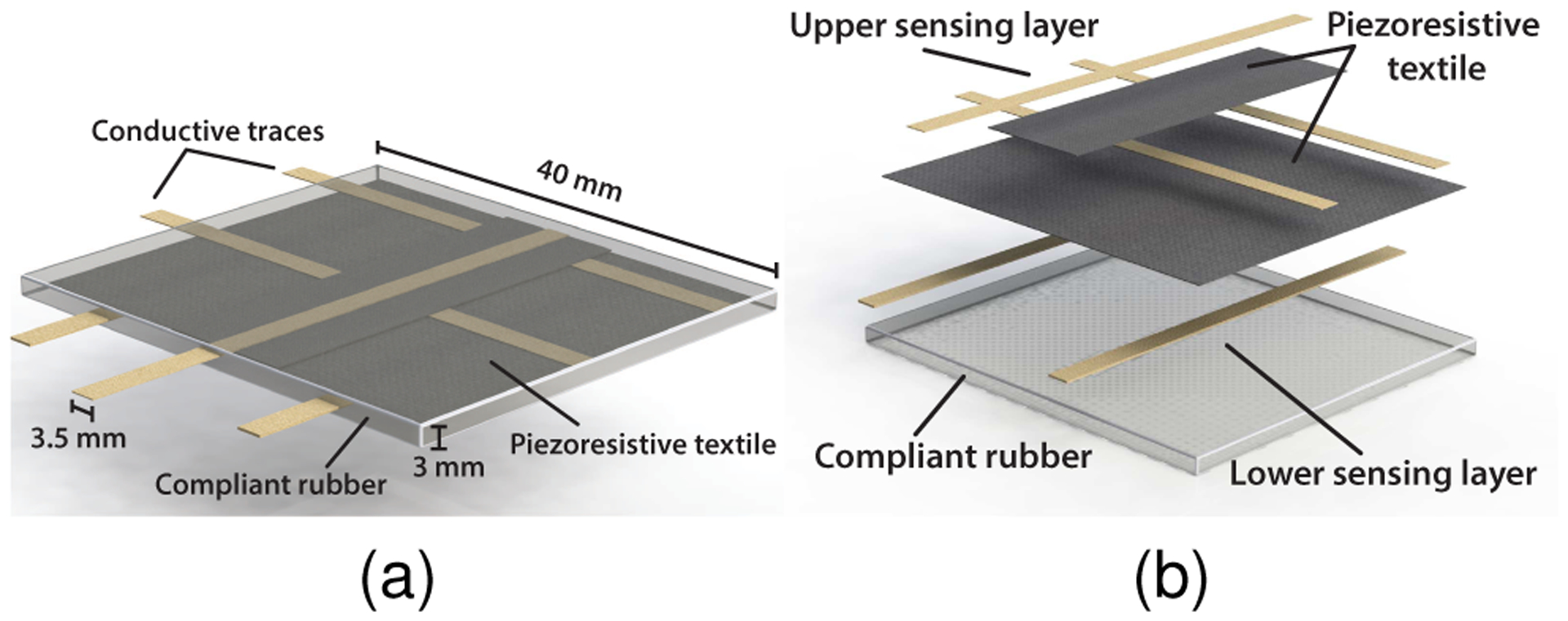Fig. 2.

The multi-layered synthetic skin sensor. (a) The sensing elements are created by the crossing of the conductive traces across the piezoresistive textile. A silicone rubber is used to encase the sensing elements, lending to its skin like flexibility and compliance. (b) An exploded view of the multi-layer synthetic skin sensor. The top layer serves as the highly sensitive RA1 and SA1 tactile receptors while the lower layer is more similar to the RA2 and SA2 receptor found deeper in the dermis of healthy glabrous skin
